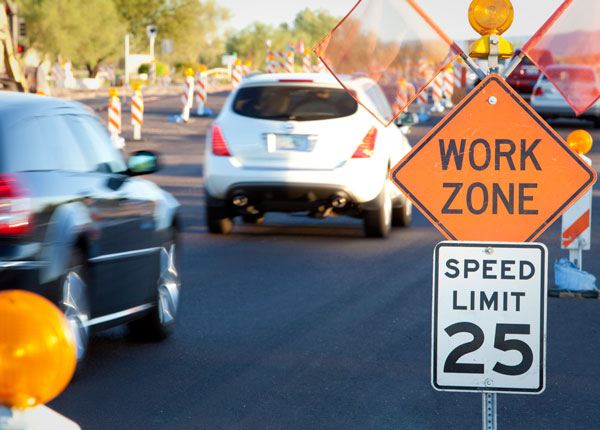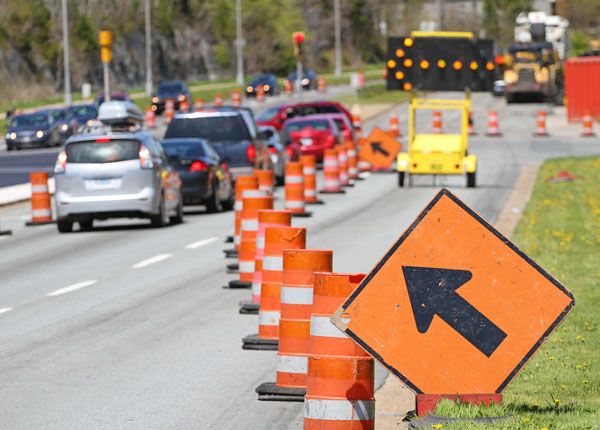
Highway Driving Safety: Emergency Stops, Making Repairs & Getting Help
Updated Dec. 11, 2020Practicing defensive driving techniques can help you avoid accidents and emergencies on the highway. You may still encounter crashes irrespective of how careful you are, as you cannot rely on other drivers to make safe decisions all the time. The nature of expressway driving means that a single accident or collision can end up disrupting many different vehicles. By searching the road ahead and leaving as much space as possible around your car, you can minimize your chances of getting caught up in an accident if one occurs.
The busier the road, the harder it will be to keep out of trouble if a crash or some other highway emergency happens. Your safety in this situation depends on thinking before you act and remaining focused – do your best not to panic. Allowing a knee-jerk reaction to take over can make the situation more dangerous for yourself and other road users.
Take a moment to consider your options before taking any evasive action; the choice you make will likely be far more effective as a result. In nearly all cases, something can be done to avoid or reduce the severity of an imminent collision.
Making an emergency stop
All motorists must learn how to bring their vehicle to a safe stop during an emergency on a highway. No matter how cautiously you drive, some emergencies – such as mechanical failures or sudden ill health – cannot be avoided. Stopping or attempting to reverse in the main driving lane on a highway is extremely dangerous, so your focus must be to reach the shoulder as quickly and as safely as possible. Remember these rules when making an emergency stop on a highway:
- 1

Always warn drivers to your rear that you intend to slow down and stop, by tapping the brake pedal gently to activate your brake lights.
- 2

Activate your hazard lights straight away – do not wait until you have successfully pulled over.
- 3

Check the space behind your vehicle in your rear-view mirror before braking.
- 4

Move to the shoulder, choosing the outside shoulder rather than the central divide shoulder – if possible.
Remain calm and maneuver in a controlled manner. - 5

Come to a full stop on the shoulder, leaving hazard lights active.
Making repairs
You should endeavor to make your stopped vehicle as visible to other highway users as possible. With fast-moving traffic just one lane away, sitting on the shoulder of the road is dangerous. Set up reflectors or flares around your vehicle, in addition to leaving hazard lights on.
Attempting to make repairs to your own vehicle on a highway shoulder is generally a very bad idea – even if you have the necessary skills and tools. Working around your vehicle will leave you vulnerable to being hit by careless drivers straying too close to the shoulder. If you are experiencing a severe mechanical problem and cannot get back on the highway, it is best to have your car towed for repairs.
Getting help
When a technical issue leads you to pull over on a highway and seek assistance, make sure your vehicle is stopped as far onto the shoulder as possible, away from the main driving lanes. Every moment you are stopped by the roadside leaves you at risk. Keep these safety tips in mind when seeking assistance on the highway:
- Signal that you need assistance by switching hazard lights on and raising the hood of your vehicle.
- Use your cell phone to call for assistance or ask any other drivers who stop to call for assistance on your behalf.
- Remain in the car with your seat belt fastened and the doors locked while you wait for help.
- Never get into a stranger’s vehicle. If they do not have a cell phone, ask them to go on ahead and call for help at the next roadside phone or rest stop.
Disabled vehicles
Remember the “move over” law when passing a disabled vehicle on the side of the highway. Moving to a more distant lane to give a disabled vehicle room is good practice, even if it is not a legal requirement in your state. You can read more about the “move over” law in your state’s driving manual if it applies in your area.
Reduce your speed as soon as you see a disabled vehicle on the highway. Keep an eye out for pedestrians, emergency responders, tow trucks and repair equipment around the stopped vehicle.




